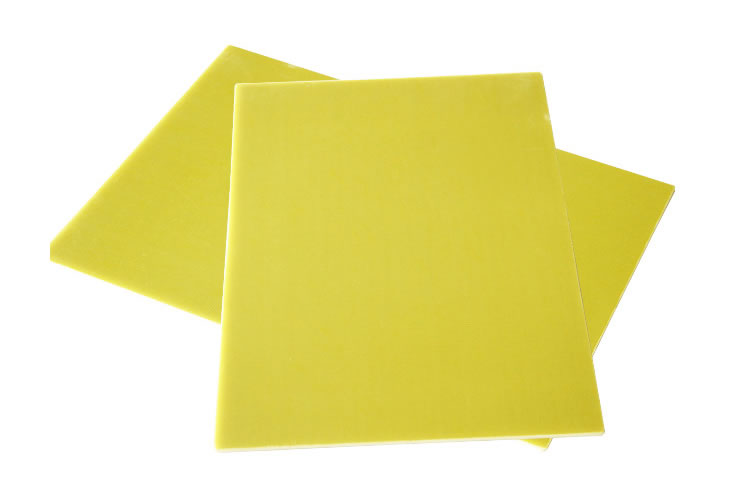FR4 epoxy fiberglass sheet has high mechanical and dielectric properties, good heat resistance and moisture resistance, and good machinability. This product is used as insulating structural parts in motors and electrical equipment, including various types of switch FPC reinforcement, electrical insulation, carbon film printed circuit boards, computer drilling pads, molds and fixtures (PCB test racks), and can be used in humid environments and transformer oil.

FR4 epoxy fiberglass sheet has white, yellow, and green colors. It still has high mechanical strength at room temperature of 150℃, good electrical properties in dry and wet states, and is flame retardant. It is used for insulating structural parts in electrical and electronic industries. It is carefully manufactured using imported raw materials, domestic presses and standard processes; the main specifications are 1000*2000 mm 1020mm*1220mm. Because of the advantages of raw materials, it guarantees high quality, low price and timely delivery. It has a stable customer base at home and abroad and enjoys a high reputation.
FR4 epoxy glass fiber board lamination technology explanation:
1. Preheating stage: Place the epoxy board in the hot press and heat press it at a temperature of about 120℃ for 30 minutes to allow the epoxy resin and the reinforcing material to fully blend and also allow the volatiles to overflow. This step is very critical. If the time is too short and the temperature is insufficient, bubbles are likely to form. If the temperature is too high and the time is too long, the blank will slip out.
2. Hot pressing molding stage: At this stage, temperature, time, and pressure will have a direct impact on the final product. These factors must also be constantly changed according to the different materials. For example, the temperature of epoxy phenolic laminate cloth is set at about 170℃, and the temperature of epoxy silicone glass cloth is set at about 200℃. If the board is thinner, the hot pressing temperature can be lowered.
3. Cooling and demolding: After the pressing is completed, put the FR4 epoxy glass fiber board into cold water to cool it down for half an hour to one hour. During this period, pay attention to the changes in internal stress. Excessive thermal expansion and contraction will cause the laminate to warp and deform.
4. Post-processing: This step is to make the performance of the epoxy board more stable. For example, placing the produced board in an oven for heat treatment can eliminate residual internal stress.

